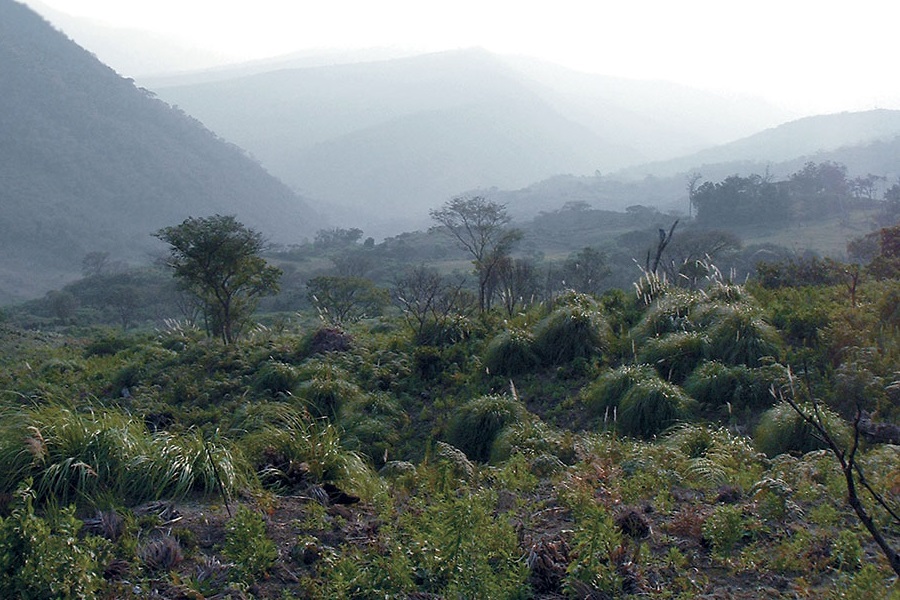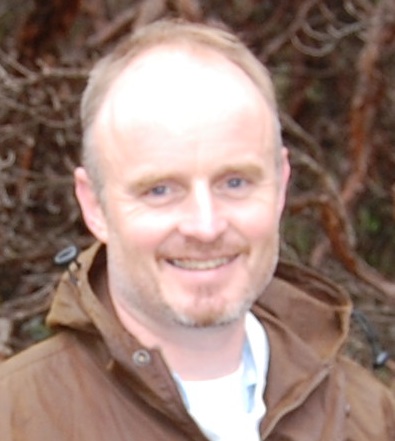Butch Cassidy and the Sundance Kid’s holdup of a Union Pacific train in Wagner, Montana, was the final straw: Such lawlessness was no longer acceptable in “the not so wild wild west,” where local rules were creating cooperation rather than conflict (see Anderson and Hill 2004). As law enforcement closed in on the Hole-in-the-Wall gang, Butch and Sundance were forced to hightail it to Bolivia, where property rights were enforced less rigorously. A hundred years later, Bolivian property rights still are a morass of overlapping, extralegal claims and counterclaims, with weak central authority, and a predominance of locally developed institutions.
The Los Negros Valley, in the Department of Santa Cruz, is a case in point. When Butch and Sundance visited Santa Cruz in 1907 they marveled at the affordability of good land with plenty of water. Since then, things have deteriorated. Dry season water flows in Los Negros have halved in the last twenty years. While this growing scarcity is a combined result of factors such as reduced water supply caused by land-use changes, more water use by irrigators upstream, and inefficiencies in water distribution, downstream landowners clearly point the finger at increases in upland deforestation.
The Los Negros Valley covers approximately 270 square kilometers, with 35 kilometers separating the upstream Santa Rosa (population: 481) from downstream Los Negros (population: 2,970). Irrigation canals provide water to 1,000 hectares (10,000 square meters or 2.47 acres) in Los Negros, providing the markets of Santa Cruz and Cochabamba with a year-round supply of carrots, tomatoes, lettuce, and other vegetables. Bordering the upper reaches of the Los Negros watershed is the 637,000-hectare Amboró National Park, one of the most biologically diverse areas in the world—712 species of birds have been discovered so far.
The national park and its buffer zone are increasingly threatened by illegal land incursions. Encouraged by local political leaders, migrants from the Bolivian highlands frequently enter the buffer zone and the park itself to extract timber and to clear forest for agriculture. The local communities, with their unclear, extralegal property rights systems, often have little recourse when their lands are invaded. As a result, forests are cut, wildlife disappears, the Los Negros River dries up earlier every year, and agricultural production and the local economy suffer.
PAYMENTS FOR ENVIRONMENTAL SERVICES
To help resolve these problems, Natura Bolivia, an environmental group led by Maria Teresa Vargas, a PERC Lone Mountain Fellow and graduate of PERC’s environmental entrepreneurship course, is developing local capacity for a payments-for-environmental-services (PES) system. PES has a simple economic logic; the users of an environmental service, in this case water, should compensate the providers of the service, in this case the upwater, should compensate the providers of the service, in this case the upstream farmers, for the opportunity cost of providing the service. Easy in theory, but difficult in practice in a country where simply defining who of the upstream residents are legal landowners presents an insurmountable challenge.
Raised in the neighboring San Juan Valley, Vargas decided that Los Negros was an appropriate pilot PES site because of a number of favorable preconditions. Most importantly, locals were aware of forest-water links: With clouds almost permanently present above the upstream forests, downstream farmers understood the connection between forest protection and the maintenance of water supplies. However, Vargas and Natura quickly identified a fundamental constraint to developing any type of contract-based system: the lack of confidence, by both upstream and downstream users, that the other party could fulfill a contract. Natura, therefore, agreed to pilot the first three years of payments by mobilizing biodiversity funds from an external donor in order to build mutual confidence that a PES system could work.
HONEY FOR WATER
Through participatory negotiations, it was decided that downstream water users would provide compensation for protection of the native vegetation in the watershed. This compensation would take the form of one beehive and training in honey production for every ten hectares of water-producing cloud forest that upstream landowners protected—a cash equivalent of U.S. $3 a year per hectare, payable up front. Other compensation alternatives discussed included infrastructural improvements to benefit upstream communities, but participants explicitly rejected the option of payments in cash. One PES-enrolled farmer explained in an interview: “If I receive cash, I know I will spend it right away. Instead, I want these payments to create something that lasts.”
All upper watershed landowners were invited to volutarily enter the PES program, but building trust and confidence in the scheme among service providers was a slow process. Sixty beehives were provided to .ve farmers in 2003, in return for the conservation of 600 hectares of cloud forests. In 2004, another 11 farmers received beehives from the municipal government, in return for the protection of 600 more hectares. By September 2006, 39 farmers were protecting 2,100 hectares. Original contracts were for a year, but responding to demand, some longer-term contracts (up to 10 years) have recently been signed. Payments are made annually, and honored contracts can be re-enrolled into the program.
BREAKING DOWN BARRIERS
Vargas and Natura had to overcome a number of difficulties to develop a market for watershed services. Lack of a credible downstream association made it tricky to ensure that service buyers would contribute equitably. As mentioned previously, trust was lacking—downstream farmers did not believe that payments to upstream farmers would lead to more conservation and waterflows; upstream users worried that the initiative was designed to appropriate their land. The scheme thus faced two fundamental barriers: unclear property rights and a lack of credible institutions to guarantee contract compliance and an efficient market.
Natura’s challenge was therefore to try to provide security of contracts and markets, and clarify property rights, in a situation where neither security, clarity, or the resources needed to provide them existed. Sound familiar? Such were the challenges when the American West was won. As in the West, Vargas believes that the answer is not to wait for centralized legal processes, but to find cheap and efficient ways to build on and develop existing, locally accepted customs and rights. Resolution of the major constraints required that Vargas and Natura tackle the following questions:
How can local property rights mechanisms be strengthened when national government is unable to help?
Use technology to reinforce hand-written bills of sale/purchase. Natura measures and demarcates forest conservation plots with a hand-held GPS receiver. The data is later plotted on a satellite image-based land use map. Field demarcation is by natural boundaries. Trails, signs, wire fencing, and parcels are only allowed into the scheme when—and this is critical—every single one of the land-owners’ neighbors agree that these indeed are the property’s limits.
How can a market for an environmental service emerge given the high cost of defining exactly what is being bought and sold?
Make a best-guess estimate, rather than exhausting resources and time to define the precise details of the service. Natura is collecting hydrological data on eight small streams in the watershed and along the main channel of the Los Negros River. Twice-weekly water depth measurements, periodic stream flow velocity calibrations, and daily rainfall measurements are helping estimate how much additional water will be provided by protection of the cloud forest. Of particular interest are differences in water flow in the dry season when lack of water becomes the limiting factor for agricultural productivity. Landowners themselves are taking the measurements in order to minimize data collection costs, to increase local credibility in the data, and to try to ensure the scheme’s self-sustainability.
How can binding contracts be established when the rule of law rarely percolates down from central government?
Have the buyers and sellers themselves co-design the contracts. In the case of an infraction, Natura could not, for political reasons, use legal means to force a non-compliant landowner to return the beehive received the previous year. Sanctions for breaking a contract might instead affect whether it is renewed, and under what conditions. Rather than impose an external legal construct, Natura helped service buyers and sellers to participatively draft contracts that respected local beliefs, customs, and culture, and provided locally acceptable and enforceable sanctions for non-compliance.
BARBED WIRE REVISITED
Although still an experiment in progress, the Los Negros PES scheme is gradually building trust in contracts and markets, and strengthening property rights by reinforcing locally developed and accepted institutions. Interestingly, for the 2006 contract renewal, many Santa Rosa farmers requested compensation not in beehives but rather in what had been the bane of Butch Cassidy and many other outlaws’ lives—barbed wire. The farmers explained that in addition to allowing them to keep their cattle out of environmentally sensitive areas, enclosing their land with barbed wire would help them strengthen their existing land claims.
Butch and Sundance’s lack of respect for Bolivian property rights finally caught up with them: not through centralized legal processes, but through a locally developed enforcement mechanism. One-hundred years later, Bolivian enviropreneur Maria Teresa Vargas is also developing and strengthening local property rights—this time not through a posse, but through institution building, an innovative conservation and development scheme, and good old-fashioned barbed wire.




